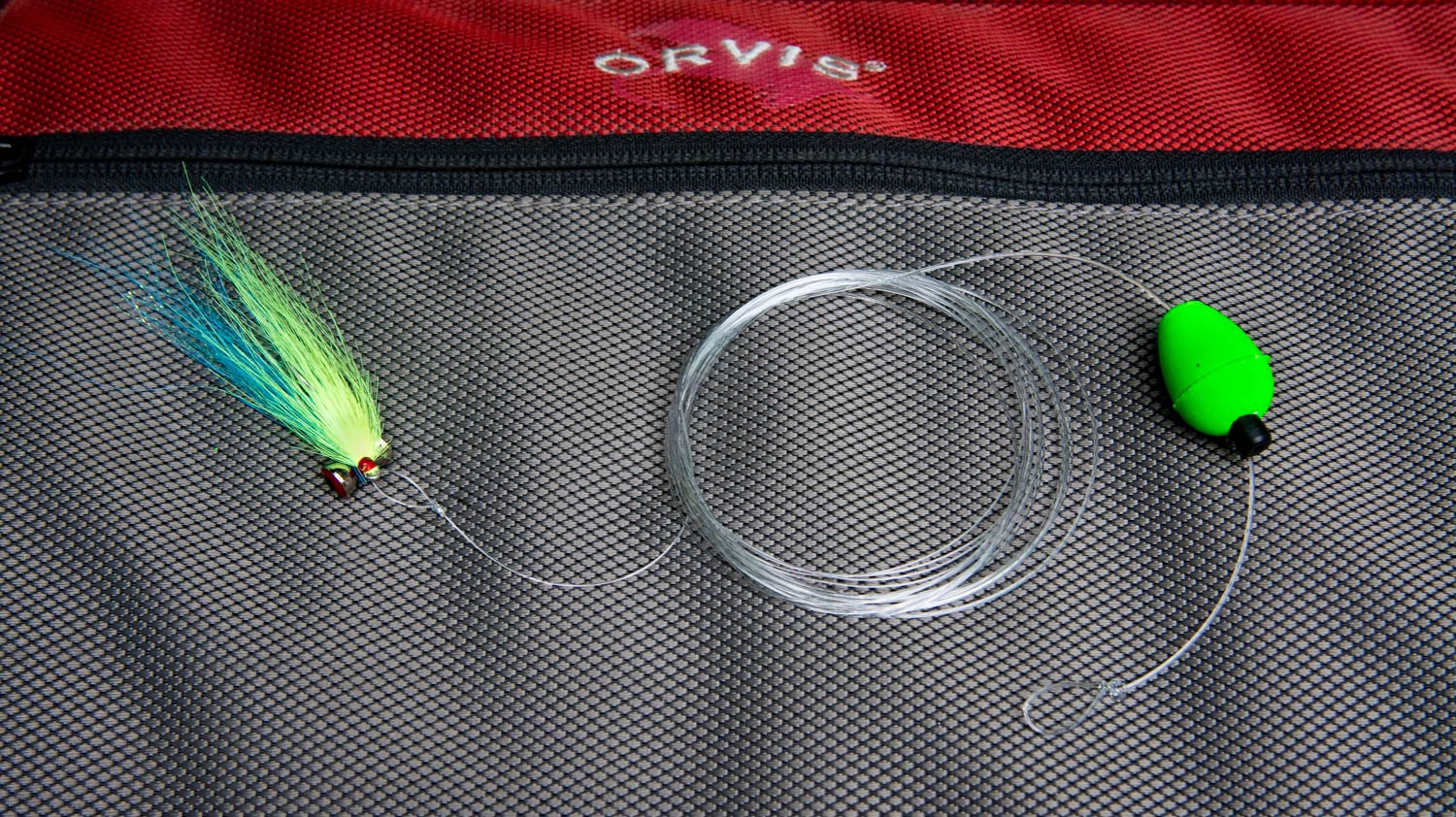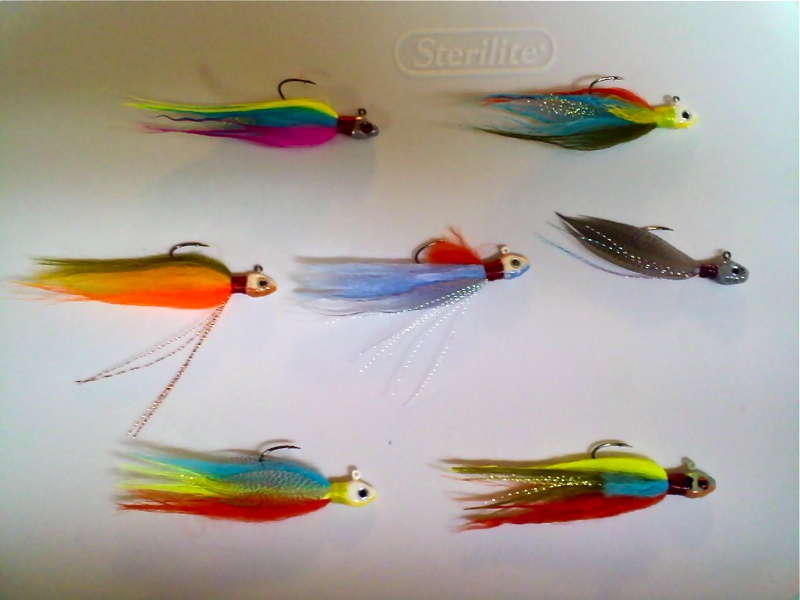This past week I wrote a fly fishing tactics post for targeting bass on reservoirs during the fall.
At the tail-end of the post, I touched base on how effective a Float N’ Fly Rig (basically a nymphing rig on my fly rod) can be for catching good numbers of bass during the late fall and winter months. From late fall through winter, when water temperatures begin dipping into the mid-50s and lower, catching bass on deep reservoirs with traditional fly fishing setups can become extremely difficult for two reasons. The first reason is because bass start becoming sluggish as their metabolisms plummet from cooling lake water temperatures. With lower metabolisms, bass feed less frequently and they also move shorter distances to forage on food (in an effort to conserve energy). This is bad news for fly anglers because it drastically shrinks the size of the strike zone (the hot zone around a bass that a fly or lure needs to enter, to consistently trigger bites) and it makes it much harder for fly anglers to find, present, and retrieve fly patterns through these small strike zones. The second reason the bass fishing is tough this time of year is because a good portion of the bass on the lakes will move out of the shallow water feeding grounds of the fall and back out into the main lake deep water areas, where they’ll often suspend in the water column in 10-25′ of water.
The main problem with cold water suspended bass is that it’s really hard for fly anglers to keep their fly patterns in the strike zone throughout the entire retrieve. It’s really only in front of the bass for a small percentage of the retrieve. The first half of the retrieve an angler struggles to get the fly down to the level of the bass, and the last half of the retrieve, the fly is coming up and out of the strike zone as it gets closer to the angler and the boat on the surface. With a Float N’ Fly Rig, the suspension/floating device (strike indicator set to a preferred depth) allows you to maintain a consistent depth with your fly pattern during the entire retrieve, even when you’re working it extremely slow to entice cold water bass. That’s critical for triggering lethargic bass that often need to be coaxed into feeding. What you’re trying to do with your float n’ fly rig is make that baitfish jig pattern look injured or dying. It needs to look like an easy meal and the bass will suck it in if you get it close enough to them. The best technique is to make a cast to the bank, let your fly sink, and then slowly bring the entire rig back to you with very subtle rod tip bounces or jiggling. All you want is the strike indicator to barely be moving as you’re bringing the rig back to you. I usually stop the twitching and pause for 20-30 seconds a couple of times during each retrieve. The more windy the day is or the more chop there is on the water, the less you have to twitch the rod tip, because you’ll naturally get action on your jig from the choppy or wavy water on the surface.
Four or five years ago, I spent quite a bit of time bass fishing with my head bass guide (who uses conventional bass tackle) during the fall and winter, and that’s when I first saw how he located and caught good numbers of suspended bass with his float n’ fly rig on our deep mountain lakes. He used a long spinning rod (8-10′) spooled with 4-6lb. test. Tied a three-way swivel onto his main running line, attached a small bobber to the second tie off area of the three-way swivel, and then tied on a long section of fluorocarbon tippet (8-14′), from which he tied on a small hand tied jig. Year after year, we caught huge sacks of suspended bass with the float n’ fly rig on his hand tied 1/8 -1/32 oz. jigs. One day, I told him, “Man, all we’re really doing is nymphing for bass, and there’s no reason I can’t do this with my fly rod.” The next trip, I did just that, tying on a 12′ 3x leader, attached a strike indicator at the far end of the butt section of the leader and tied on 1/16 oz. jig with a non-slip loop knot. That day, I held my own, catching just as many bass with my fly rod as my buddy did with his spinning outfit. I’ve modified the rig a little over the years, but it still largely remains the same as that first standard trout nymph rig, only with a longer leader and a baitfish fly pattern tied on a jig hook, not a trout nymph.
As for where to fish the float n’ fly rig, the best place to start is on rocky bluff banks (steep 45 degree banks) or main lake points. Every day is different though and you need to listen to the fish and try to locate the bait. Sometimes deep water humps, secondary points or big coves will be the ticket. Use your electronics to find the bass and the bait and set your strike indicator so that your jig fly will be at or slightly above the depth of the fish. This will keep it in view of the most fish. Don’t position your boat too close to the bank so you don’t run the risk of sitting on top of the bass. Pay attention to where your bites are coming during the retrieve so you can dial your boat position in. I’ve found it best to cast to bank and work the rig back to the boat in deep water.
Below are some hand tied float n’ fly jigs that work really well for me and my bass guide. Most of the flies are tied from craft fur. We do use some Krystal Flash and mallard flank at times. One thing I found is that contrasting colors in the patterns seem to work much better than all natural realistic looking patterns. I think a lot of that has to do with the flies being fished over ten feet deep where many colors turn grey. Lastly, don’t tie your jigs too big. I rarely fish jigs over 3 inches. Most of the baitfish this time of year will be three inches or smaller.
Get out there and try this fun Float N’ Fly Rig out on your fly rod during the late fall and winter months this year. If you stick with it and use the tips I’ve suggested, I’m confident you’ll catch good numbers of bass and have most of the lake to yourself. Just dress extra warm, because the lake can be brutally cold this time of year.
Keep it Reel,
Come fish with us in the Bahamas!
Kent Klewein Gink & Gasoline www.ginkandgasoline.com hookups@ginkandgasoline.com Sign Up For Our Weekly Newsletter!


Your photo definitely shows the best indicator for fishing this rig at depth. Without the quick release type indicator you have one helluva time getting a fish to hand if you have it set at depths of 12ft or more.
J
Great idea. I wonder how well it might work on saltwater fish like tarpon.
Bobbers have become popular on the Florida Keys flats. Especially with guides. No more leading the fish timed to the drop rate of the fly…just set it for a foot and a half, chuck it out in front of the pod, and forget it till the bobber goes down. Skill, skill, and more skill.
Wouldn’t it work even better with a red/white bobber, with a spring release, and at the end of a jigging spinning outfit? Just ask’n.
Pingback: Tippets: Nymphing for Bass, Tarpon Facts, Streamers for Steelhead | MidCurrent